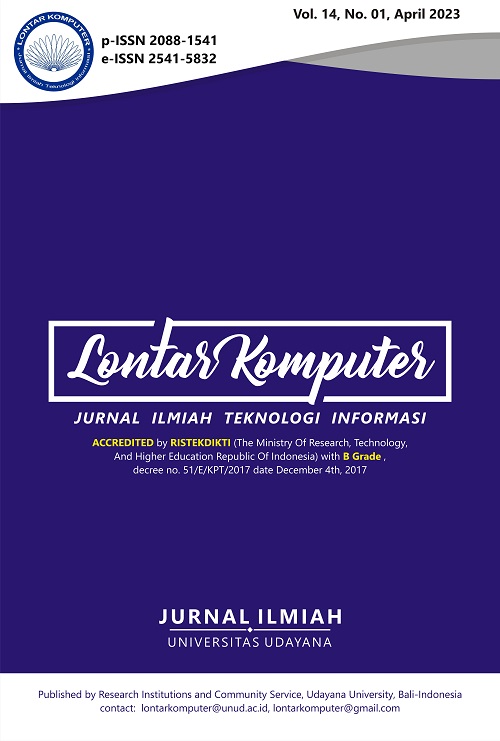Nowcasting the Number of Airplane Passengers at Ngurah Rai Airport Using Google Trends Data
Abstract
Data on the number of aircraft passengers is essential to airport managers and the government's policies. The policy relates to improving the facilities and capacity of airports and other affected sectors, such as the transportation and tourism industries. A policy taken will be better if the data used is very close to the time of policy decision-making. Therefore, a technique is needed to forecast very close to the current condition of the number of aircraft passengers, namely nowcasting. One of the data sources that can be used for nowcasting is Google Trends data. In this study, the identification of relevant keywords used for nowcasting, the formation of nowcasting models, and the search for the best model for nowcasting the number of aircraft passengers was carried out. The nowcasting methods used are SARIMAX and multilayer perceptron. In this study, five relevant keywords were generated for domestic departures and two for international departures. In the nowcasting modeling, the best model for nowcasting domestic departures is produced, namely the multilayer perceptron with MAPE and MAE values of 11.194% and 28.048 respectively, while for departures Internationally, the best model was produced, namely SARIMAX with MAPE and MAE values of 8,641% and 50,205 respectively.
Downloads
References
[2] G. Xie, S. Wang, and K. K. Lai, “Short-term forecasting of air passenger by using hybrid seasonal decomposition and least squares support vector regression approaches,” Journal of Air Transport Management, vol. 37, pp. 20–26, 2014, doi: 10.1016/j.jairtraman.2014.01.009.
[3] StatCounter, “Search Engine Market Share Indonesia | Statcounter Global Stats,” 2021. https://gs.statcounter.com/search-engine-market-share/all/indonesia/2020 (accessed Nov. 12, 2021).
[4] C. Anvik and K. Gjelstad, “‘Just Google it’. Forecasting Norwegian unemployment figures with web queries,” 82 Pages, no. 11, 2010, [Online]. Available: https://brage.bibsys.no/xmlui/handle/11250/95460.
[5] Skytrax, “World’s Top 100 Airports 2021 | SKYTRAX,” 2021. https://www.worldairportawards.com/worlds-top-100-airports-2021/ (accessed Nov. 12, 2021).
[6] BPS Provinsi Bali, “Produk Domestik Regional Bruto Provinsi Bali Menurut Lapangan Usaha Tahun 2016-2020,” 2021.
[7] BPS, “Statistik Telekomunikasi Indonesia Tahun 2020,” 2021.
[8] C. Li Long, Y. Guleria, and S. Alam, “Air passenger forecasting using Neural Granger causal Google trend queries,” Journal of Air Transport Management, vol. 95, no. May, p. 102083, 2021, doi: 10.1016/j.jairtraman.2021.102083.
[9] I. W. Adli and A. Aditsania, “Implementasi Model ARIMAX dan Jaringan Saraf Tiruan dalam Memprediksi Kedatangan Wisatawan ke Provinsi Bali,” e-Proceeding of Engineering, vol. 8, no. 2, pp. 3099–3110, 2021.
[10] Google Support, “FAQ tentang data Google Trends - Bantuan Trends,” 2021. https://support.google.com/trends/answer/4365533?hl=id&ref_topic=6248052 (accessed Dec. 28, 2021).
[11] I. A. Akbar and R. Kurniawan, “Pemodelan Nowcasting Tingkat Pengangguran Terbuka Menggunakan Data Google Trends Dengan Metode Antlion Optimization-Support Vector Regression,” Seminar Nasional Official Statistics 2020., vol. 2020, no. 1, pp. 760–770, 2021, doi: 10.34123/semnasoffstat.v2020i1.504.
[12] N. Nikentari, H. Kurniawan, N. Ritha, D. Kurniawan, U. Maritim, and R. Ali, “Particle Swarm Optimization Untuk Prediksi Pasang Surut Air Optimization of Backpropagation Artificial Neural Network With Particle Swarm Optimization To Predict Tide Level,” Jurnal Teknologi Informasi dan Ilmu Komputer, vol. 5, no. 5, pp. 605–612, 2018, doi: 10.25126/jtiik2018551055.
[13] R. Gustriansyah, D. I. Sensuse, and A. Ramadhan, “A sales prediction model adopted the recency-frequency-monetary concept,” Indonesian Journal of Electrical Engineering and Computer Science, vol. 6, no. 3, pp. 711–720, 2017, doi: 10.11591/ijeecs.v6.i3.pp711-720.
[14] M. B. Kağan Albayrak, İ. Ç. Özcan, R. Can, and F. Dobruszkes, “The determinants of air passenger traffic at Turkish airports,” Journal of Air Transport Management, vol. 86, 2020, doi: 10.1016/j.jairtraman.2020.101818.
[15] J. P. Guilford, Fundamental statistics in psychology and education, vol. 5, no. 2. Mcgraw hill book company, 1956.
[16] M. Kuhn and K. Johnson, Applied predictive modeling, vol. 26. Springer, 2013.
[17] V. Fonti, “Feature Selection using LASSO,” VU Amsterdam, pp. 1–26, 2017.
[18] O. Claveria and S. Torra, “Forecasting tourism demand to Catalonia: Neural networks vs. time series models,” Economic Modelling, vol. 36, pp. 220–228, 2014, doi: 10.1016/j.econmod.2013.09.024.
[19] W. Alam, R. A. Y. Mrinmoy, R. R. Kumar, K. Sinha, S. Rathod, and K. N. Singh, “Improved ARIMAX modal based on ANN and SVM approaches for forecasting rice yield using weather variables,” The Indian Journal of Agricultural Sciences, vol. 88, no. 12, pp. 1909–1913, 2018.
[20] J. Heaton, Introduction to neural networks with Java. Heaton Research, Inc., 2008.
[21] L. Fausett, “Fundamentals of neural networks: architectures, algorithms, and applications.” Prentice-Hall, Inc., 1994.

This work is licensed under a Creative Commons Attribution 4.0 International License.
The Authors submitting a manuscript do so on the understanding that if accepted for publication, the copyright of the article shall be assigned to Jurnal Lontar Komputer as the publisher of the journal. Copyright encompasses exclusive rights to reproduce and deliver the article in all forms and media, as well as translations. The reproduction of any part of this journal (printed or online) will be allowed only with written permission from Jurnal Lontar Komputer. The Editorial Board of Jurnal Lontar Komputer makes every effort to ensure that no wrong or misleading data, opinions, or statements be published in the journal.
 This work is licensed under a Creative Commons Attribution 4.0 International License.
This work is licensed under a Creative Commons Attribution 4.0 International License.























